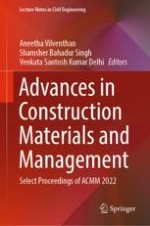2023 | OriginalPaper | Buchkapitel
Evaluation of Self Compacting Concrete with Fiber and Bagasse Ash
verfasst von : G. D. Kumara, V. Sai Kumar, P. V. Sivapullaiah, A. Sreenivasa Murthy
Erschienen in: Advances in Construction Materials and Management
Verlag: Springer Nature Singapore
Aktivieren Sie unsere intelligente Suche, um passende Fachinhalte oder Patente zu finden.
Wählen Sie Textabschnitte aus um mit Künstlicher Intelligenz passenden Patente zu finden. powered by
Markieren Sie Textabschnitte, um KI-gestützt weitere passende Inhalte zu finden. powered by
